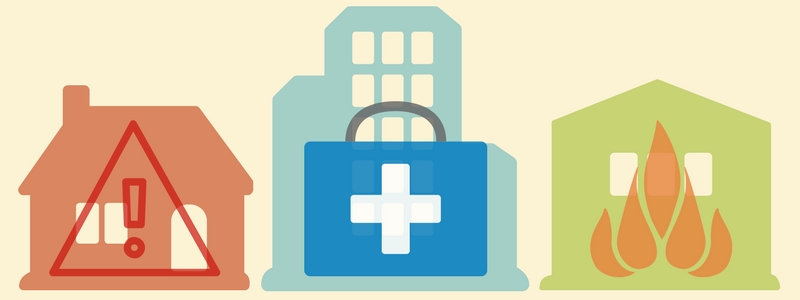In light of recent natural disasters and global seismic activity, it is a good time to review emergency preparedness for your home and workplace. San Diego is prone to earthquakes and wildfires and should do an annual review of safety precautions, planning and supplies. Your safety may depend on how well-prepared you are.
San Diego Gas & Electric has some resources to help you get started. Learn the basics of emergency preparedness in SDG&E’s video, “Emergency Preparedness: Make a Kit and a Plan.” The following three procedures are most important in emergency preparedness:
Develop a Written Plan
Developing a written plan provides a systematic and repeatable approach to emergencies. Your plan should be tailored to meet your specific situation, such as preparing for elderly and disabled family members/coworkers as well as pets. Your plan should be reviewed, updated and practiced annually.
Here are some things to consider when making a plan:
- Create an emergency plan identifying two meeting locations for family/coworkers
- One close to home/work and one outside your neighborhood in case of evacuations
- Practice the plan
- Review the emergency plans at your workplace, your children’s school or daycare center and other places where members of your family regularly spend time away from home
- Plan safe routes away from your home and workplace to high, safe ground
- Develop a plan for family pets and livestock
- Keep current important documents (birth certificates, passports, etc.) in a safe-deposit box
Prepare an Emergency Kit
During an emergency, you will need supplies. Here are some of the basics you should have on hand.
- Three-day supply of bottled water (one gallon per person per day)
- A three-day supply of packaged, dried, and canned food
- First aid kit and essential medicines
- Pet food and pet carrier
- Manual can opener
- Portable radio and flashlights with spare batteries in waterproof bags
- An extra set of car keys
- Cash and credit cards
- Special items for infants, elderly or disabled family members
Checklist
Read SDG&E’s comprehensive checklists for your home, at work and in your car. Use these emergency checklists to put your plans in writing.
Gas & Electric Protocol
Visit SDG&E’s website for proper protocol relating to gas and electric utilities during emergencies. Safety is imperative when handling these utilities.
Wildfire Safety and Preparedness
Protect your home in case of wildfire. Get full Cal Fire tips and videos on creating defensible space and hardening your home.
Here are a few tips to start with:
- Have an emergency kit and plan in place
- Create a defensible space around your home
- Remove dead plant debris 30 feet from your home
- Keep fire wood piles more than 30 feet from your home
- Keep your property lean and green – mow long grass, remove dead shrubs and trees
- Properly space out shrubs and trees
- Plant fire-resisting plants
- Harden your home
- Make your home more fire resistant by incorporating fire-resistant materials on your roof, vents, windows, etc.
- Learn how here
Earthquake Safety and Preparedness
Some safety precautions have changed since your days of school earthquake drills. Here are some of the latest earthquake safety tips from the American Red Cross.
- Practice DROP, COVER and HOLD ON
- Move as little as possible – most injuries during earthquakes occur because of people moving around, falling and suffering sprains, fractures and head injuries
- Doorways are no stronger than any other part of a structure so don’t rely on them for protection. During an earthquake, get under a sturdy piece of furniture and hold on.
- Stay indoors until the shaking stops and you are sure it is safe to exit
- If you smell gas, get out of the house and move as far away as possible. Fire is the most common hazard after an earthquake.
- If you are outdoors find a clear spot away from buildings, power lines, trees, and streetlights and drop to the ground. Stay there until the shaking stops.
- If you’re in a vehicle, pull over to a clear location and stop. Avoid bridges, overpasses and power lines if possible. Stay inside with your seatbelt fastened until the shaking stops.
- If a power line falls on your vehicle, do not get out. Wait for assistance.
- Check yourself for injuries and get first aid, if necessary, before helping injured or trapped persons
- After an earthquake, the disaster may continue. Expect and prepare for potential aftershocks, landslides or even a tsunami if you live on a coast.

